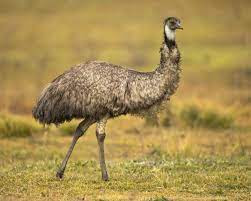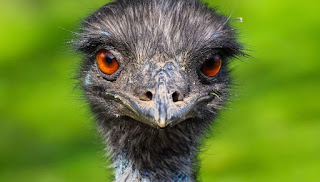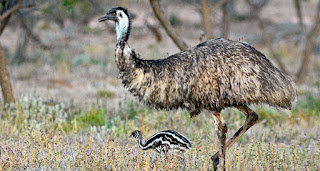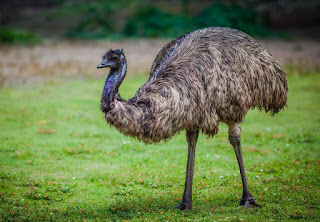Emu Bird facts have always fascinated people, and these fascinating facts about Emu Bird will do just that and more. You’ll learn how to recognize an Emu Bird, how to tell the difference between male and female Emu Birds, and which conditions are needed for their young to develop successfully in the egg. In fact, if you keep reading, you’ll find plenty of other interesting facts about Emu Bird. So sit back and relax while I dive into the fascinating world of Emu Bird!

The emu is a large, flightless bird native to Australia. It has a long neck and legs and can run at speeds of up to 50 km/h (30 mph). The emu’s peculiar appearance—and its nickname, the running chicken—can make it intimidating. But while they are swift on their feet, there’s no need to be afraid; emus won’t attack without provocation. If you want to get up close with these interesting birds, here are 10 fun facts about them: #1: The emu is an herbivore, which means it eats only plants. Its diet consists mainly of grasses and seeds in addition to fruit.

The emu bird’s natural habitat is savannah grasslands. They prefer to roam in large herds and can easily travel across areas of desert or grassland, provided they have access to plentiful food and water. The emu bird can travel long distances without any issues and spends most of its time grazing on grass, making it a sight commonly found among agricultural farmers as they tend to their fields. In addition to having excellent eyesight and hearing, which help it defend itself against predators like wild dogs, foxes, dingoes, and wolves, one thing that makes it even more able to defend itself from attack is its ability to run at speeds of 40 miles per hour! This helps it evade danger quickly—and makes for a memorable meal for hungry predators!

These large birds do not fly but instead, run and jump. They can reach speeds of up to 20 miles per hour (32 kilometers per hour). In addition to sprinting, emus are strong swimmers. Like all birds, emus have hollow bones for lightness and flexibility. This helps them avoid injury during high-speed running and leaping as well as when they're fighting or mating. Their legs also have oil-secreting glands that lubricate their feathers for water repellency and wind resistance.

Emus can run up to speeds of 50 km/h (31 mph) over short distances. It is not usually a fast bird, though; its main means of defense from predators are running away or standing still and pretending to be a tree. An emu will rarely attack a human being unless it is cornered or feels that its young are threatened. Unlike ostriches, emus do not bury their heads in the sand, but sometimes they will stand with their eyes closed if they think there is danger around.

The emu is a national symbol of Australia and is protected by law, although in some circumstances permits can be obtained to cull large numbers.[23] In New Zealand, it was declared a noxious bird in 1884 and its habitat was severely restricted by 1987. The North American population was hunted to extinction by 1900,[24] primarily for its feathers, which were used in fashionable women's hats. The Japanese and European populations are also threatened; although both are legally protected, poaching is still a problem for these birds.